The British Army’s Watchkeeper Mk1 uncrewed air system (UAS) is now expected to remain in service until March 2027.
Responding to a parliamentary question from Conservative MP Ben Obese-Jecty, Pollard confirmed that Watchkeeper is “in the process of being retired from service with an Out of Service Date of March 2027.”
This is a significant update to Defence Secretary John Healey’s statement in November 2024, when he said the 14-year-old surveillance drone would be withdrawn from service from March 2025.
At the time, Healey described Watchkeeper as “a 14-year-old army drone which technology has overtaken”, adding that “a modern army must self-evidently have a modern drone capability able to operate in the most challenging environments.” He said the system would be replaced by “a new advanced capability” drawing on operational lessons from the war in Ukraine and rapid advances in autonomous systems.
Watchkeeper entered service in 2010 as a derivative of the Israeli Hermes 450, adapted by Thales for the British Army. Designed for intelligence, surveillance, target acquisition and reconnaissance (ISTAR) missions, it has been deployed in Afghanistan and across NATO exercises.
Despite its contribution to British operations, the programme has faced persistent technical issues and multiple grounding orders after several crashes in both the UK and overseas.
A Ministry of Defence tender issued on 10 October 2025 for “In Barrack Engineering Support to Watchkeeper” suggests the aircraft will continue to receive engineering and maintenance support at Andover, further indicating its continued use beyond the original withdrawal date.
The delay to Watchkeeper’s retirement aligns with the development timeline of its planned successor under Project Corvus. As we previously reported, the Ministry of Defence launched the formal procurement process for Corvus on 31 July 2025. Valued at £130 million, the contract will run for an initial five years starting in May 2026.
Managed by Defence Equipment and Support (DE&S) in Bristol, Corvus is intended to meet the Army’s Land Tactical Deep Find requirement, delivering persistent 24-hour surveillance across divisional and corps-level operations.
The new system must provide real-time land and maritime ISTAR, low-latency data sharing across coalition networks, and be capable of operating in contested airspace and GNSS-denied environments. It will be operated by 47 Regiment Royal Artillery, the unit currently flying Watchkeeper.
The revised out-of-service date for Watchkeeper ensures continuity until Corvus or an interim system is fielded.



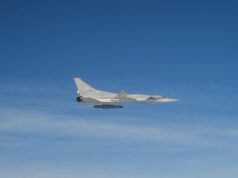
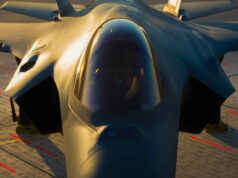

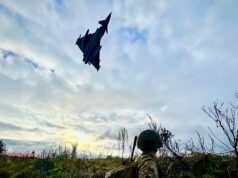
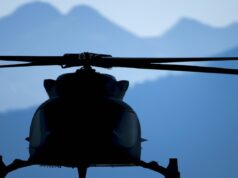

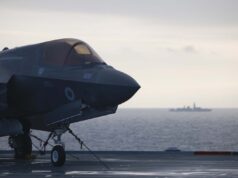

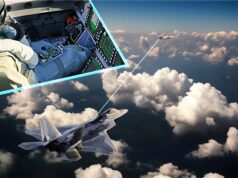
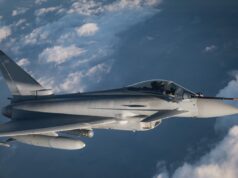

I knew it had been kept on and not just culled as Healey suggested, but I’d read until 2026, not 2027.
Quite refreshing a capability is kept and not just chucked on the scrapheap, until it’s replacement arrives.
Now, where is the Puma replacement?
Orders pending for Reeves to announce that the latest black hole, not of course of her making, means that we have no money…
Yes it’s good news.
Puma replacement???
I heard household cavalry saddles have been nailed onto watch keeper fuselages mate…
Nice one mate. I’ll take it over nothing at all.
For keeping an eye on Gaza, perhaps?
More likely for Ukraine if there’s a ceasefire. That’s a vast area to monitor, whereas Gaza is less than a quarter of the size of London, and densely packed, so drones wouldn’t be able to separate suspicious activity from genuine rebuilding. Although you may be right. We keep getting hints of the UK’s behind the scenes involvement in Gaza.
Any way it’s good news we aren’t gapping for the Army at least. I wonder then about the Reapers.
Watchkeeper is also Army, not Air Force, and wouldn’t have the legs for Gaza.
Personally I think every single drone system should be retained and maintained.. drones and getting to grips with a modern drone filled battlespace and developing skills perfecting how you will operate requires a mass of drones. Yep pull them out of front line duties and use them for training around anti drone doctrine.. then if there is ever a war fill them up with a blast frag warhead and use them as one way attack drones..Who cares if they are out of date it will fly for 17 hours at 80mph and carry a 400Ib payload.. there is about 45 of them left.. that will make an impression.
On one hand it’s refreshing not creating another capability gap. On the other, is it another excuse not to actually spend money on a replacement? Are we actually avoiding a capability gap or pushing it further down the line since (as far as I am aware) we don’t have an actual replacement lined up and it’s already scheduled to be 2 years behind schedule. Which, for what is ostensibly an off the shelf drone is an indictment all of itself!
What I’m hoping is that it’s bridging a gap until a replacement enters service and they just haven’t been that public about the replacement.
Sadly I think you’re probably correct.
Experience has shown, that these types of drones in a peer vs peer conflict, don’t last very long. Ukraine’s experience with the Bayraktar TB2 was that they had what was essentially a golden hour. Where Russia’s air defences were disorganised and the mission control software for the air defence systems couldn’t cope with the slow and low radar cross section of the TB2. However, this situation rapidly reversed, to such an extent, Ukraine barely use their TBN2s near the front line. The Pantsir has been credited with shooting down most of Ukraine’s TB2s.
Systems like the Watchkeeper, which is of a similar size to the TB2, will face the same fate. If we are in a future conflict with Russia, they will be used to dealing with such drones. However, all is not lost. If we are engaged in a near peer or against an asymmetric force. Watchkeeper being used in reconnaissance and surveillance role will have its place. As its unlikely to face air defence systems like the Pantsir. If our opposing force have something like a Pantsir, you can guarantee that it will be top of the priority list of targets to be neutralized.
For the Royal Artillery to get decent target information, they will have to look at drones that can provide the necessary surveillance but are classed as attritable. Equipped with a camera system that is good enough, with enough duration for a couple of hours. That is cheap to replace and operate. perhaps, something along the lines of Qinetiq Banshee Whirlwind?